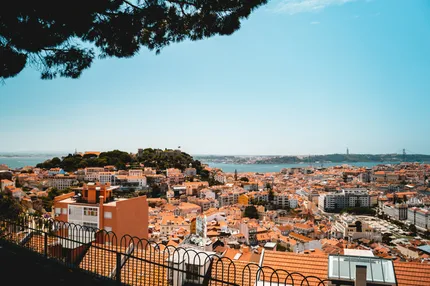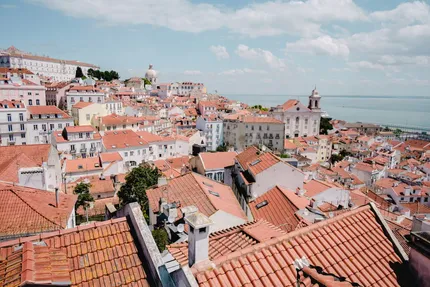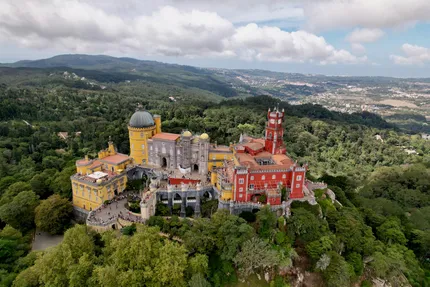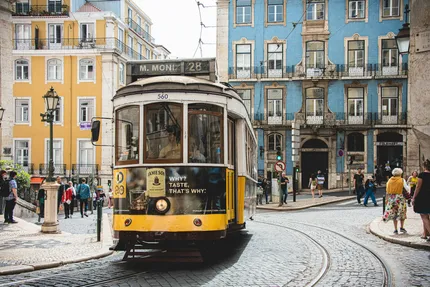CityTouring

City trip to Lisbon
PortugalLisbon, the sun-kissed capital of Portugal, is a city where history meets contemporary culture. Perched on the edge of the Atlantic Ocean, this city boasts a captivating blend of traditional neighborhoods, scenic vistas, and vibrant street life. Known for its colorful tiles and charming trams, Lisbon breathes life into its picturesque narrow streets which are lined with pastel-colored buildings. From the ancient Alfama district to the modernity of the Parque das Nações,
Lisbon offers an array of experiences for all types of travelers. Culinary delights such as fresh seafood and iconic pasteis de nata pastries are a must-try here, adding another layer to the city’s allure. Additionally, Lisbon’s climate is mild, making it a year-round destination that is particularly inviting for those looking to combine city exploration with leisurely seaside relaxation.

Belém Tower
Belém Tower is a UNESCO World Heritage site and symbolizes the Age of Discovery. It's an iconic landmark situated along the Tagus River, offering stunning views and historical insights.

Alfama District
The Alfama district is the oldest neighborhood in Lisbon, known for its narrow streets, historic buildings, and traditional Fado music. It's ideal for exploring on foot and offers a glimpse into Lisbon's past.

Daytrip to Sintra
Just 30 minutes from Lisbon, Sintra offers a day trip with fairy-tale palaces and beautiful gardens. Visit the colorful Pena Palace, explore the mystical Quinta da Regaleira, and enjoy panoramic views from the Moorish Castle.
Lisbon is particularly appealing to travelers who appreciate a mix of culture, history, and casual sophistication. History enthusiasts will revel in Lisbon’s rich tapestry of historical sites, with many monuments and museums offering insights into Portugal's storied past. Foodies will find the city a haven, especially those eager to explore a diverse culinary landscape ranging from local markets to Michelin-starred dining experiences. The coastal location makes Lisbon an ideal choice for those who enjoy a hybrid of urban and beach vacations; visitors can easily spend the day at nearby beautiful beaches before returning to the city's vibrant nightlife.
Artistic souls will also find Lisbon a source of inspiration, with neighborhoods like Alfama and Chiado offering charming aesthetics and local art scenes. Moreover, Lisbon's relatively affordable prices compared to other European capitals make it an attractive option for budget-conscious travelers seeking an enriching yet economical getaway. In summary, Lisbon offers a broad spectrum of experiences, making it a versatile destination suitable for a variety of interests and preferences.

Best time to visit Lisbon
The best time to visit Lisbon is from March to May or September to October. During these months, the weather is pleasantly mild, and the city is less crowded. Travelers can enjoy outdoor activities and explore the city's vibrant culture without the peak summer tourist crowds and inflated prices.
More activities and things to see in Lisbon:
Jerónimos Monastery
A masterpiece of Manueline architecture, the Jerónimos Monastery is also a UNESCO World Heritage site. It's renowned for its ornate façade and stunning cloisters, showcasing Portugal's maritime heritage.
São Jorge Castle
Overlooking Lisbon, São Jorge Castle provides historic insight and panoramic views of the city. It's an ancient fortification with engaging exhibits on Lisbon's history and archaeological findings.
LX Factory
A creative hub inside an old industrial area, LX Factory is packed with quirky shops, art galleries, and cafes. It's a vibrant spot for those looking to experience Lisbon's cultural and modern side.
Lisbon Oceanarium
One of the largest indoor aquariums in Europe, dedicated to education and conservation. It offers a captivating view into marine biodiversity with species from all over the world.
Tram 28
A vintage tram journey through Lisbon's hilly streets and historic districts. It offers a unique sightseeing experience of the city's architectural and cultural landmarks.
Fado Museum
Dedicated to Lisbon's traditional music, Fado, the museum offers multimedia exhibits and artifacts that trace the history and significance of this soulful genre.
Bairro Alto
Lisbon's lively neighborhood famed for its nightlife. Packed with bars, restaurants, and music venues, it's the heart of the city's vibrant cultural nightlife scene.
Gulbenkian Museum
The Calouste Gulbenkian Museum hosts a collection of artworks from ancient to modern times, including pieces by European painters and ancient Egyptian artifacts.
Cabo da Roca
Cabo da Roca, der westlichste Punkt Europas, bietet spektakuläre Klippen direkt am Antlantik und eine raue Schönheit. Besucher erleben eine zerklüftete Landschaft, einen historischen Leuchtturm sowie einen symbolischen Marker, der die Großartigkeit der Natur mit dem Küstencharme Portugals verbindet.
Getting around in Lisbon
Lisbon is a city that is quite easy to explore on foot, especially in its historic neighborhoods like Alfama and Baixa. The city's public transport system is efficient, with buses, trams, and metro services covering most areas. The iconic tram 28 is a must-experience route, offering a scenic overview of the city's hills and iconic spots. Cycling is less common due to Lisbon's hilly terrain but is becoming more popular with the recent introduction of dedicated bike lanes and e-bike rentals. For areas not reached by public transport, ridesharing services and taxis are widely available. Renting a car is generally unnecessary and may even be inconvenient due to narrow streets and limited parking in central areas.
Getting to Lisbon
For international travelers, the main gateway to Lisbon is Humberto Delgado Airport, located about 7 km from the city center. The airport handles flights from many different airlines with direct connections to many European cities, the Americas, and other global destinations. Reaching Lisbon by train is possible, with international services like the overnight Sud Express from Madrid and regular routes from other Portuguese cities. Long-distance buses also serve Lisbon with connections to various European cities via operators like Eurolines or Flixbus. The Gare do Oriente station is a significant hub for both trains and buses, providing excellent connectivity for travel within Portugal and beyond.